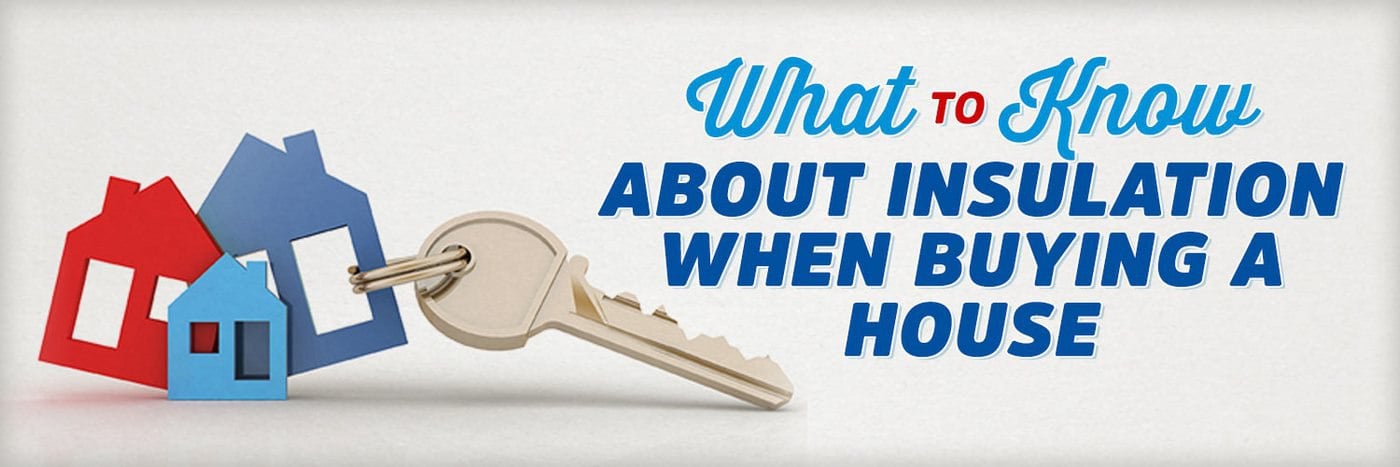What to Know About Insulation When Buying a House


Pressure mounts when you’re in the home-buying process.
There’s the stress of submitting your bid, researching the neighborhood, consuming as much knowledge as possible about a home’s intricacies, and a lot more.
One detail you won’t want to overlook when perusing a house you hope to transform into your dream home is its insulation.
One of the first things you should do when buying a home is ask the agent what type of insulation is in the home. Furthermore, ask for the home's gas and electric bill history. This will give you a good idea of how well the home’s insulation is functioning.
Anyone serious about selling their home should have this information readily available. If the current homeowner doesn’t have the information, a home inspector can provide it.
Let’s examine some of the other things you need to know about the insulation in your dream home.
Does the Home Have Fiberglass Insulation?
Fiberglass insulation is an old technology that is not as effective as other options.
There are a few signs that indicate insulation will need to be replaced or improved upon. Here's what you should look for.
Fiberglass in the Walls or Attic
Fiberglass in the walls or attic definitely needs to be updated since it’s been proven to break down and settle over time.
Because of this, its ability to insulate the home diminishes as its R-Value decreases by 40 percent – potentially costing you money that you could have otherwise saved.
Cold Temperature Reaction
When the temperature outside is below 20 degrees, fiberglass loses up to 40 percent of its effectiveness.
That percentage increases to 50 percent when the temperature drops below zero.
Install Must Be Perfect
Finally, with its lower R-Values, fiberglass must be installed perfectly to be effective at normal temperatures.
The material also allows for some airflow even when installed correctly.
Does the Home Have Cellulose Insulation?
Cellulose insulation is not the best choice for an attic. It’s acceptable, but you will have to maintain it.
Maintaining Cellulose
Cellulose insulation is only effectively used in an attic as long as at least 12 inches have been installed.
The material’s R-Value is generally around 3.7 per inch. However, it loses effectiveness over time due to settling and shifting.
Cellulose Can Leave a Mess
Additionally, as loose-fill insulation, cellulose tends to find itself throughout a home’s ductwork, walls, and fixtures.
More Isn’t Necessarily Better
A lot of folks think that when it comes to insulation, more is always better. But that’s not quite the case!
Just because you take a peek in the attic and see a ton of insulation doesn’t mean you’re all set and good to go.
Overdoing it can actually lead to some headaches, like moisture problems, added weight, and even structural damage from the material shifting around.
So, while more isn’t always better, properly installed insulation definitely is.
The Roof Can Signal Insulation Problems
The roof can be a telltale sign of insulation issues. If you notice that your roof looks a little worse for wear—like it's dried out, curling, or even scorched from the sun—that’s a big red flag.
These signs often mean your home might not have enough insulation or proper ventilation. Without adequate insulation, heat can sneak in during the summer, making your roof work overtime. In the winter, the heat escaping from your home can cause ice dams, leading to all sorts of damage.
So, if your roof's looking a bit rough around the edges, it’s worth taking a closer look at your insulation and ventilation situation. It might just be time for an upgrade.
Find a Home Inspector Who Offers a Home Energy Audit
When it’s time for a home inspection, it helps to find an inspector who does a home energy audit.
A home energy audit provides insight through diagnostic testing into where and how a home loses energy. This will display the current insulation's effectiveness and if it will need upgrading or additional insulation in some spaces.
Buying Your Dream Home
Buying a home is about knowing what you’re getting into.
You most likely have a budget and need to consider all potential future costs, not just the price of the home.
Knowing the insulation situation saves you dollars upfront and in the long term as you avoid any future problems.
If the insulation in your new home needs an upgrade, call us at 866-900-3626 to request an estimate or fill out the form on our website.
Related Articles
5 Things to Buy and Replace When You Buy a New House
Should I Replace Old Insulation in My Existing Home?
About Eric Garcia
Eric brings his knowledge and training in building science, training in spray and injection foams from the manufacturers, more than 8 years installing foam insulation, as well as selling and managing in the foam insulation industry. He is also BPI and Dale Carnegie certified and has taken several building science courses including air sealing and building envelope. Eric’s responsibilities include overseeing and giving support to all of the branches of the RetroFoam of Michigan company, office, estimates, and installs. He is also the Professor of Foam on our educational YouTube series Foam University. Even when Eric is off he is usually still “working” or thinking about work, but when he can get away he enjoys camping, hiking, hunting, and woodwork.



